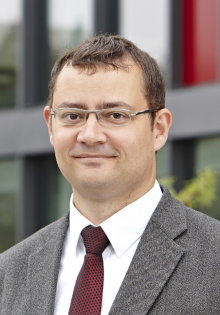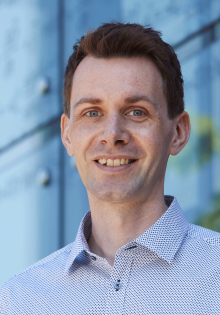Natural and artificial crystals often exhibit the ability to change the spectral color of light, a process known as nonlinear optical effect. This effect allows the frequency of a light component to be changed and transformed, for example, from the red to the green color spectral region.
Color conversion is used in numerous applications, such as nonlinear microscopy of biological structures, material investigations, LED light sources and lasers, optical communications, highly sensitive sensors, as well as in photonics and quantum optical technologies based on it (e.g., in optical quantum computers).
The underlying physical process is based on so-called anharmonic potentials of the crystal atoms and often leads to an exact multiplication of the light frequency, which is referred to as the generation of "higher harmonics". Although the effect occurs naturally in many crystals, it is usually extremely weak.
Therefore, there are numerous approaches to enhance the effect, for example by combining different materials and structuring them on micro- and nanoscales. Paderborn University has conducted intensive and successful research in this area over the past decades.
One focus of this research in photonics is metamaterials and especially metasurfaces. Here, structured elements in the nanometer range are applied to a thin substrate material, with which irradiated light interacts and, for example, forms optical resonances. By a focusing and longer interaction time, the light can more efficiently generate higher harmonics.
In an interdisciplinary collaboration within the Transregional Collaborative Research Center TRR 142 funded by the DFG, the research groups of Prof. Cedrik Meier (Nanophotonics & Nanomaterials), Prof. Thomas Zentgraf (Ultrafast Nanophotonics) and Prof. Jens Förstner (Theoretical Electrical Engineering) at the Paderborn University have developed an innovative approach to generate higher harmonics more efficiently. By using specially sized arrays of microscopic elliptical cylinders made of silicon, they were able to take advantage of the Fano effect - a special physical mechanism in which multiple resonances amplify each other.
The scientists first determined the optimal geometry parameters using numerical simulations and investigated the underlying physics. They then fabricated the nanostructures using state-of-the-art lithography techniques and conducted optical studies. It was demonstrated both theoretically and experimentally that the generation of the third harmonic - i.e. light with three times the frequency of the irradiated light - can be performed particularly efficiently compared to previously known structures of this type.
The researchers' significant findings were published in a research paper entitled "A multi-mode super-fano mechanism for enhanced third harmonic generation in silicon metasurfaces" in the renowned journal "Light: Science & Applications" published by Springer-Nature (freely available as open access).
Link to the original publication: https://www.nature.com/articles/s41377-023-01134-1
Based on this publication, the magazine Laser Focus World launched an article as well as a video feature: https://www.laserfocusworld.com/optics/article/14294634/tailored-nonlinear-metasurfaces-generate-higher-harmonics-more-efficiently
Video: https://www.youtube.com/watch?v=tZ0Z_v5iE20&t=156s&ab_channel=LaserFocusWorld




